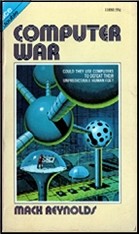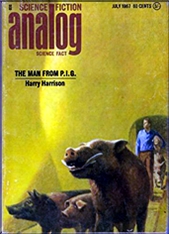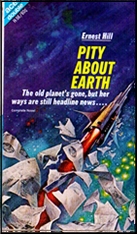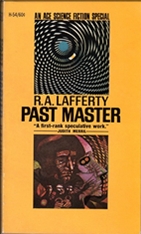ELIZABETH BEAR & SARAH MONETTE “Boojum.†Short story. First appeared in Fast Ships, Black Sails, edited by Ann & Jeff VanderMeer (Nightshade Books, 2008). Reprinted in three “Best of Year†anthologies edited by Kathryn Cramer & David G. Hartwell; by Gardner Dozois; and by Rich Horton. Also reprinted in Cosmic Corsairs, edited by Hank Davis & Christopher Ruocchio (Baen, 2020).

Nothing says “space opera†more than pirates in space, and that’s exactly what this story’s about. What’s somewhat unique (though perhaps not entirely) is that the pirates’ ship is a living organism, a boojum, a spacefaring vessel they have named the Lavinia Whateley. She is described as “a vast spiny lionfish to the earth-adapted eye. Her sides were lined with gasbags filled with hydrogen; her vanes and wings furled tight. Her color was a blue-green so dark it seemed a glossy black unless the light struck it; her hide was impregnated with symbiotic algae.”
What is likely to be even more unique is that when the crew has finished plundering their latest prey, Vinnie finishes it off, hull, engines and all, by, um, eating it. Part of their loot in their latest score are some cylindrical metal containers containing human brains. Captain Song laughs it off, but Black Alice Bradley, a junior grade engineer, is not so sure about it. She is right.
The cylinders were a shipment intended for the Mi-Go, and they want what they paid for. The Mi-Go come “from the outer rim of the Solar System, the black cold hurtling rocks of the Öpik-Oort Cloud. Like the Boojums, they could swim between the stars.” Black Alice likens them to “the pseudoroaches of Venus … with too many legs, and horrible stiff wings.”
Black Alice likes living in Vinnie, and hopes someday Vinnie will respond in kind. Luckily she is on the outside of the ship on a repair mission when the Mi-Go show up … but you will have to read anything more than this on your own. This is as far as I go.
I think that Black Alice, who is the primary protagonist in this one, could be played in a TV show based on it by the young lady who stars in Poker Face, which I reviewed on this blog a while back. She’s a most sympathetic figure, in a definitely non-conformist way.
Other than the action that’s packed into this one, well, I assume you all recognized the Lewis Carroll reference. But what about the Livinia Whately (from The Dunwich Horror) and the Mi-Go (aka the Fungi from Yuggoth)? This gives the tale a whole new dimension, most certainly so.









